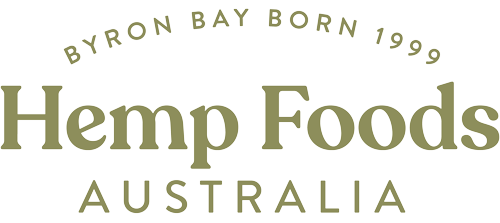Omega Fatty Acids, Explained!
Author: Alex Pendlebury Date Posted:29 June 2020

We hear about Omega fatty acids often, that they are good for us and to include them in our diet. But I would love to explain a little further (trying to keep it simple!) what they are, why they are healthy and what foods are rich in them.
Many of us have heard of Omega 3s, but there are actually several omega fatty acids. Omega fatty acids are unsaturated fats, including polyunsaturated fats (like omega 3 & 6) or monounsaturated (like omega 9s). Omega 3, 6 and 9 fatty acids are all important dietary fats and serve different functions within the body. Incorporating balanced amounts of both essential and non-essential fatty acids are necessary for maintaining overall heart health and general wellness.
Fun fact - Hemp seeds are packed with omega fatty acids, containing omega 3, 6 and 9!
On the other hand, saturated fatty acids (mostly found in animal fats like meat, cheese, butter and dairy) and trans fats (found in heavily processed foods like cookies, chips, cakes, pies etc.) are bad for your cholesterol levels and are associated with an increased risk of heart disease and other diseases.
We should try to avoid saturated and trans fats where we can, and try consuming foods containing heart-healthy monounsaturated and polyunsaturated fats including omega-3 fatty acids instead.
I personally like to focus on eating plant based omega fats daily like hemp seeds, chia seeds and a small serve of nuts (including walnuts, almonds, nut butters etc.). I also include a serve of fish or seafood such as salmon, tuna, rockling, sardines in my diet about twice a week. If I need a little bit of oil for cooking, I cook with olive oil, and dress with either olive or hemp oil, but really try not to don’t over do oils on/in my food.
What foods are rich in Omega fatty acids?
Omega 3s are found in oily fish, seafood and also in nuts and seeds (including hemp seeds, chia seeds, flaxseed meal, Brazil nuts, walnuts, flaxseeds, hemp oil, pumpkin seeds, and also algae oil- these are all good plant based sources of Omega 3.
Good sources of Omega 6 & 9 are plant oils, and also nuts and seeds. (See below for more detail)
Omega Fatty Acids, what are they? Lets break it down further
Omega 3:
Omega 3 is a healthy polyunsaturated fat. It is an Essential fat, which means you have to get it from your diet. Omega 3 has important benefits for your brain and heart health, and are anti-inflammatory.
3 common types of Omega 3 are:
ALA (Alpha-linolenic acid) Found in nuts and seeds; including Hemp seeds, walnuts, flaxseed, chia seeds - Used by the body for energy and studies show they can reduce cholesterol & triglyceride levels, which can reduce heart disease and stroke risk
EPA (Eicosapentaenoic acid) Found in Oily fish (cod, salmon, mackerel, Sardines), seafood - can help reduce inflammation in your body
DHA (Docosahexaenoic acid) Found in: Oily fish (cod, salmon, mackerel, Sardines and algal oils), seafood - Important for normal brain development and function
Omega 6:
Omega 6 is also a polyunsaturated fat. And is also an Essential fat which means you have to get it from your diet, although the western diet that we eat generally contains too much omega 6- and an excessive amount can be pro-inflammatory (which is a bad thing - increasing inflammation in the body which can increase risk of heart disease, cancer, arthritis and more).
In saying this, a healthy diet should consist of a ratio of more omega 6 than 3 though, at a ratio of about 4:1 or less (meaning about 2-4 times more omega 6 than 3) consuming the right balance means they can both work together to promote good health. The general western diet has a ratio between 10:1 – 50:1!! Too much omega 6, not enough omega 3.
A good way to avoid too much omega 6 is by avoiding or eating small amounts of any fried foods, heavily processed (packaged) foods, oily/creamy take away etc. and eating mostly whole foods with plenty of plant foods like veggies, grains, fruit, legumes, nuts and seeds is the best way to ensure you balance your intake well.
Two common types of Omega 6 are:
ARA (Arachidonic acid) found in: poultry, meat, eggs, Dairy products, mayonnaise
LA (linoleic acid) found in: plant based oils like: Soybean oil, corn oil, sunflower oil, canola oil, rice bran oil, peanut oil etc. Nuts and seeds also contain omega 6 in lesser amounts than the oils though
Omega 9
Omega 9 is a monounsaturated fat, which isn’t classed as ‘essential’ as it can be made by the body, but consuming omega 9 over other types of fat such as saturated and trans fats is more beneficial for our health!
A type of omega 9 is called Oleic acid and it is found in:
Olive oil, hemp oil, almonds, almond oil, cashew oil, avocado oil, sunflower oil, canola oil, hemp seeds, avocados
I hope this gives you a bit more insight and understanding into the phrase ‘healthy omega fatty acids’ and an idea of how to include them in your diet!
 cart -
cart - 










